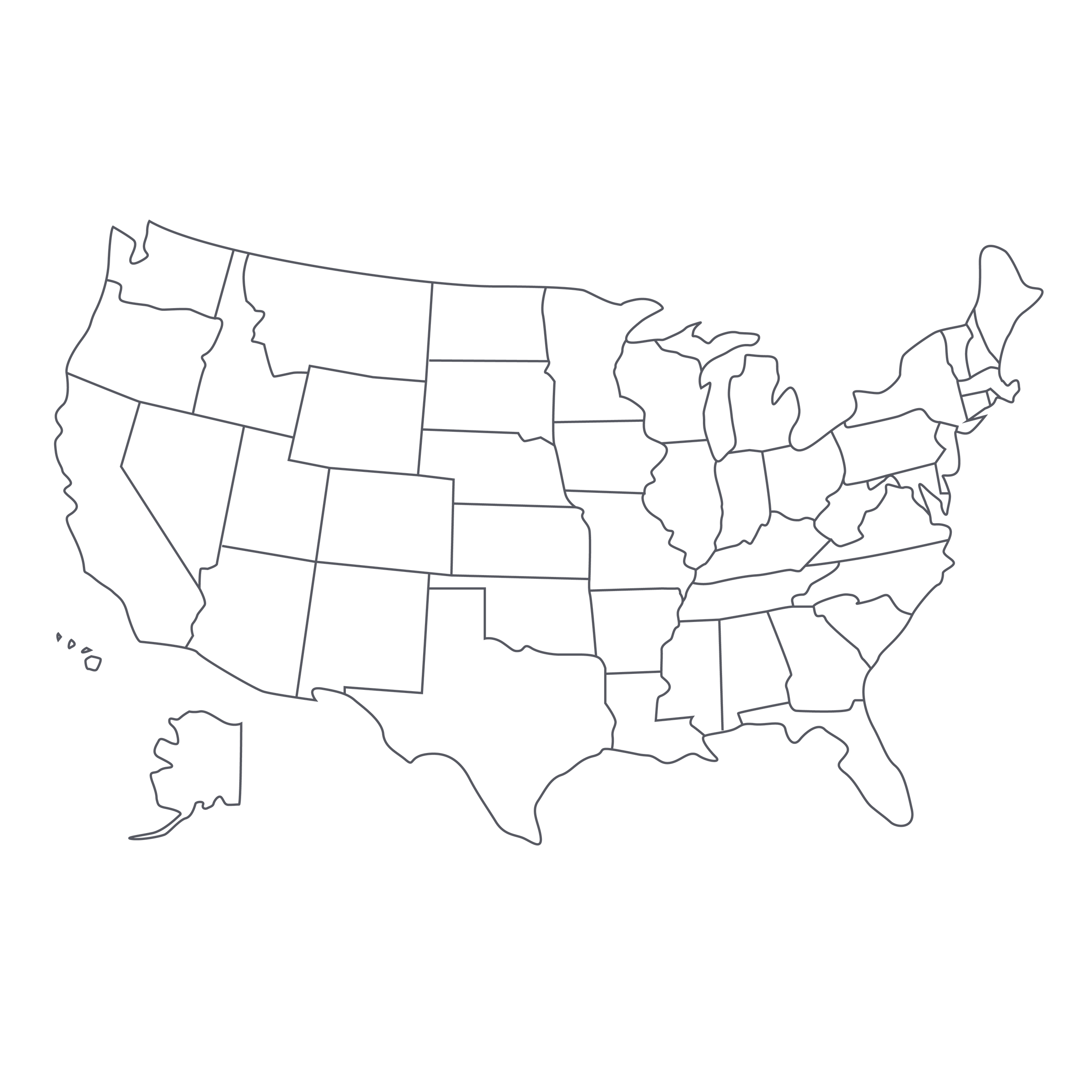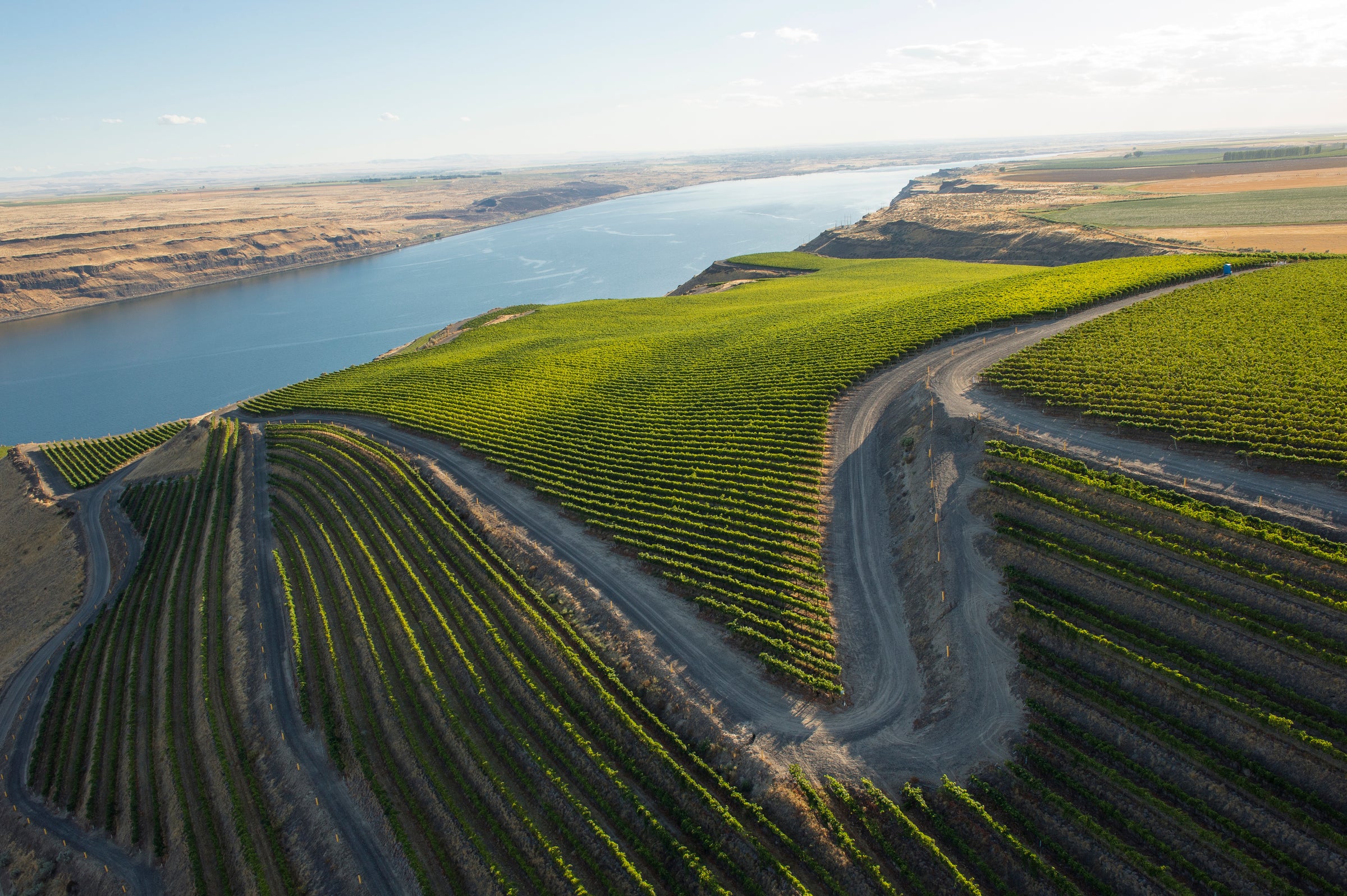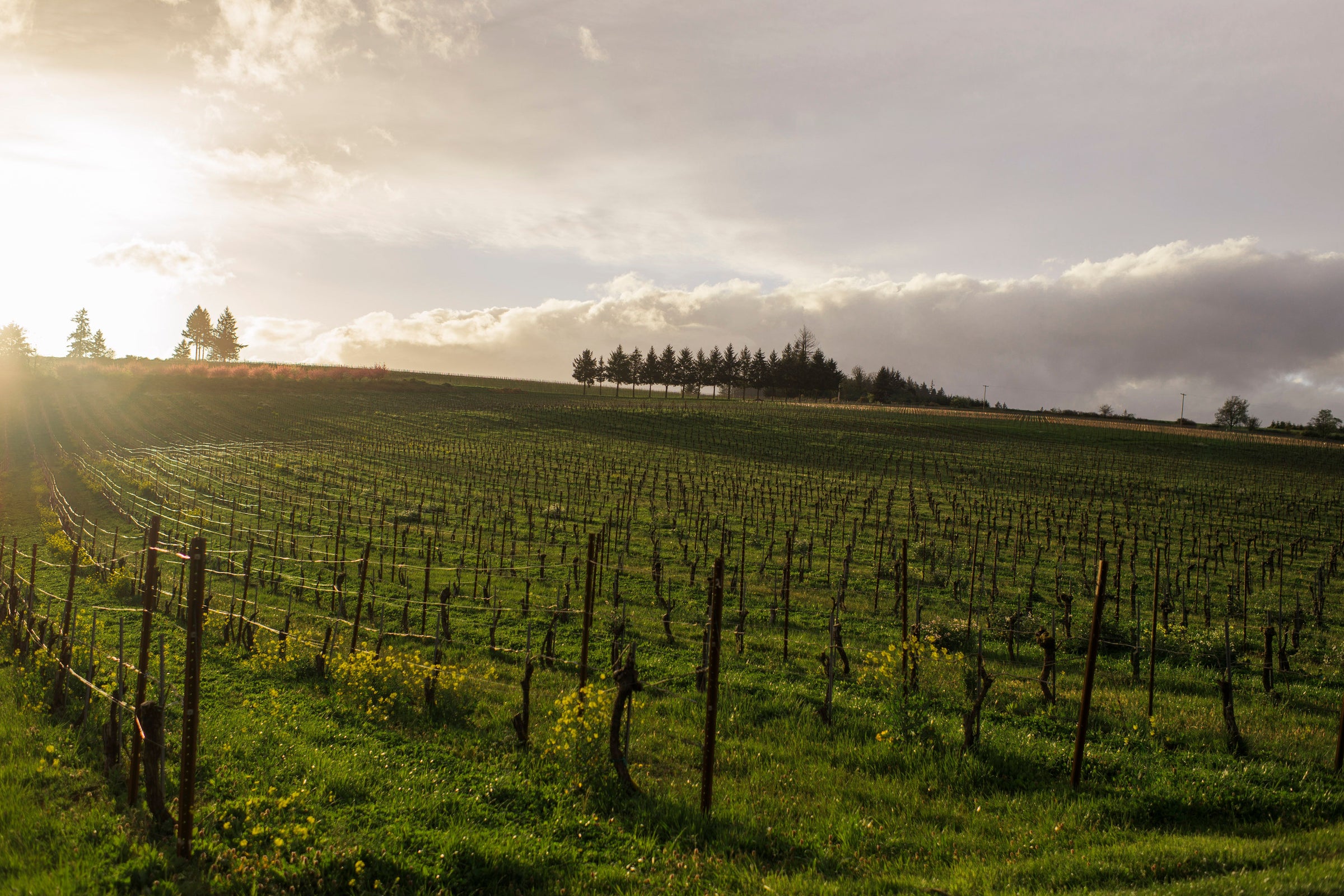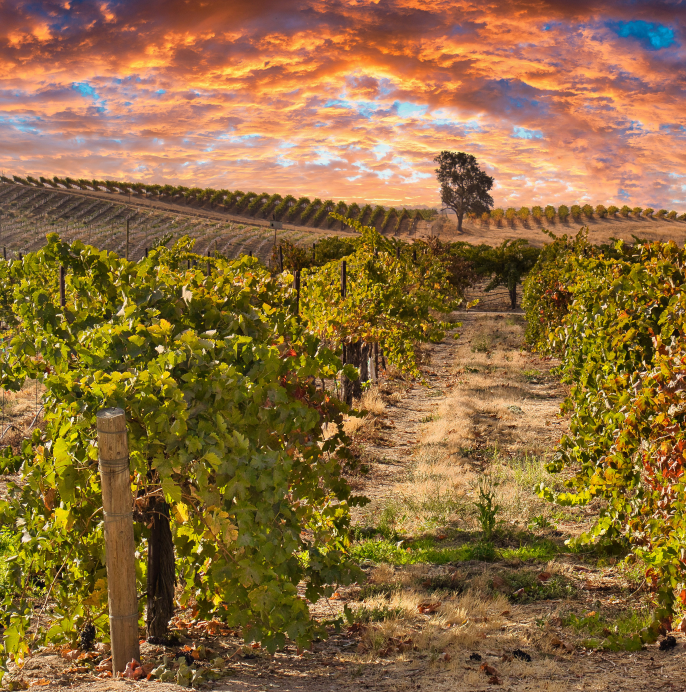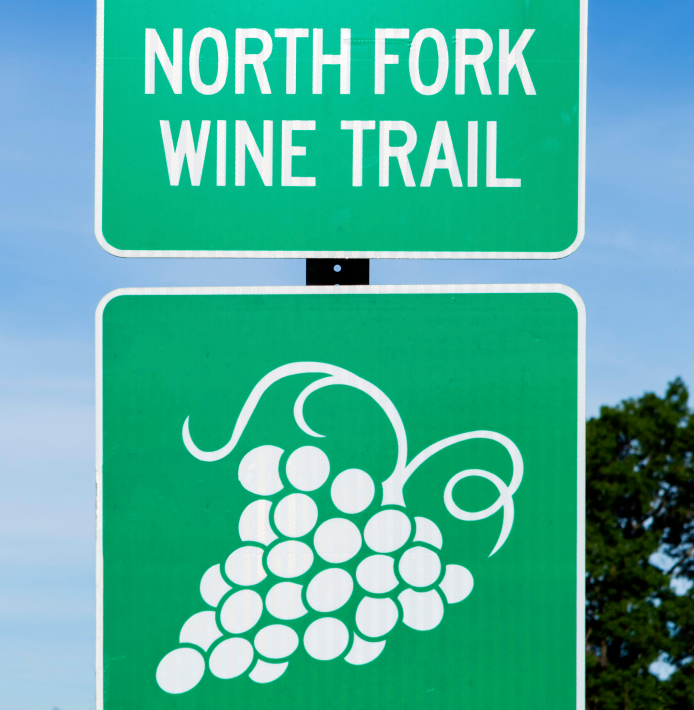When I think of Joseph Swan wines I think of finesse. This goes not just for the estate’s Pinot Noirs (there is, of course, a clone of Pinot Noir named for the legendary Mr. Swan) but for all their many offerings—including those from grapes not widely known for their finesse. Today we have one of the most singular Petite Sirahs I’ve ever tasted, sourced from the same vineyard that graces the label of one of the most singular Zinfandels I’ve ever tasted.
Perhaps you, too, have tasted Swan’s iconic “Bastoni Vineyard” Zinfandel. It is in much wider circulation than their Bastoni Vineyard Petite Sirah, the wine on offer today, for a simple reason: there’s much more Zinfandel planted there! This is one of California’s great heritage vineyards, originally planted by Italian immigrants in the early 1900s, and, three generations later, it’s still in family hands. There’s only a small amount of Petite Sirah in the modern-day Bastoni Vineyard, sprinkled amidst the Zinfandel for blending purposes, but Swan’s longtime winemaker/successor, Rod Berglund, thought the Petite Sirah deserved a showcase. This ’14, which is beginning to display some of the leathery, spicy notes that come with time, may be the most aromatically nuanced and, yes, finessed Petite Sirah I’ve ever tasted. It’s so much more than the typical inky mouthful of saturated dark fruit, and no, I’m not surprised—just delighted. I can’t believe we got such an amazing deal on it: Take the full measure of this wine, then consider the price, and it’s impossible not to be blown away.
At the heart of all things, Joseph Swan is the original 13-acre “estate” vineyard on Laguna Road outside Forestville which, when Swan bought it in 1967, contained old Zinfandel vines. That vineyard is now planted predominantly to Pinot Noir and now includes a variety of different Pinot Noir clones, including the now-famous “Swan Clone” that Joe Swan propagated back in the early ’70s, using the traditional French séléction massale method (using cuttings from the best-performing vines to propagate new plants).
Joe Swan really was a viticulturist first and a “winemaker” second, and he took frequent trips to Burgundy to talk vineyards with the great minds over there (he often traveled in the company of Bay Area importer/Francophile Kermit Lynch). And, like so many California vintners of that era, he came to wine from somewhere else: A former airline pilot, he started out as a hobby winemaker but quickly got more serious about his craft, enlisting the help of no less an eminence than André Tchelistcheff, who urged Swan to plant Pinot Noir (and Chardonnay) in the cool, foggy hills of the northwest Russian River Valley. Swan later encouraged Berglund, himself an enthusiastic amateur when the two men met, to become a winemaker—and now Berglund has as many vintages under his belt as his late mentor. The consistency and assurance of the Joseph Swan Vineyards lineup is no accident.
And while Pinot Noir may be the headliner, Swan and Berglund never abandoned the varieties that played such a huge role in California viticultures formative years: Zinfandel, of course, but also Tannat, Valdiguié, Grenache Blanc, and Petite Sirah. The Bastoni Vineyard, in Santa Rosa, sits within the Fountaingrove District AVA in Sonoma County, with soils described as Spreckles Series sandy/clay loam. It is exactly the kind of heritage site we’d expect the Joseph Swan team to champion with a vineyard-designate bottling.
Only a few hundred cases of this Petite Sirah are made in any given vintage, if at all—so again, I’m amazed that we can (a) offer any at all (b) at such an amazing price. Berglund once described this bottling as “like a middle linebacker doing ballet,” and I couldn’t agree more. There’s some nice heft to the wine, but nowhere near the amount of inky, syrupy extract typically found in Petite Sirah: Aged in neutral French oak, the wine displays a deep purple-ruby hue moving to a magenta rim, with brambly aromas of crushed black cherry, blackberry, blueberry, violets, leather, white pepper, graphite, and lots of underbrush. It is medium-plus in body and, most notably, impeccably balanced—it’s settling into a nice middle age, with relatively modest alcohol and great freshness guaranteeing more positive evolution still ahead. Decant it 15 minutes before serving in large Bordeaux stems and enjoy its perfectly calibrated mix of dark fruit and earthy, spicy savor with duck confit, bbq brisket, or some spice-rubbed baby back ribs. As I said above: Prepare to be blown away!
